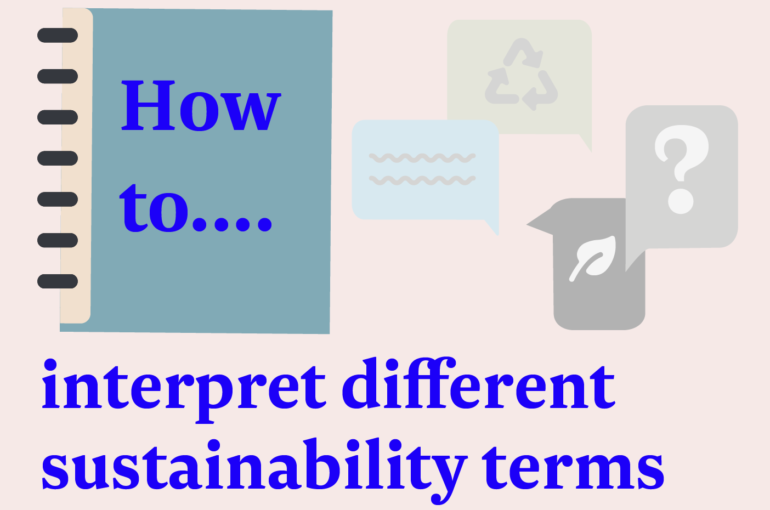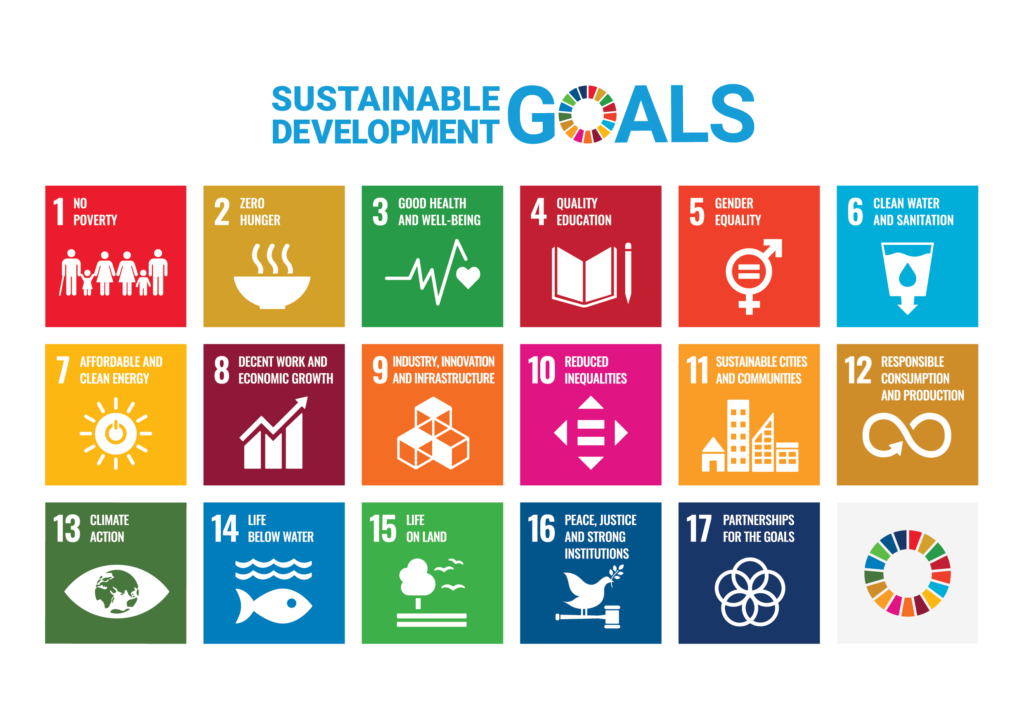How to… interpret different sustainability terms

Our goal is to make impact fun and accessible for every company. In our “How to…” blogs you find practical tips, steps and insights every other week. This way all brands can take sustainability to the next level! This week’s blog is about the different sustainability terms that are used.
Interpreting all the different sustainability terms that are used can be hard. What is the difference? And more important, which one fits your strategy the best? In this blog we’ll shortly explain the terms that are used most often.
Sustainability
Back in 1987, The United Nations defined sustainability as “meeting the needs of the present without compromising the ability of future generations to meet their own needs.”[i]. Most important, sustainability is more than only thinking about the environment. Subjects such as hunger, (in)equality, and education are also part of sustainability. Sustainable development (also referred to as corporate sustainability) has three core elements: economic growth, social inclusion and environmental protection.
Sustainable Development Goals (SDGs)
The Sustainable Development Goals (SDGs) were adopted by all United Nations Member States in 2015 as a universal call to action to end poverty, protect the planet and ensure that all people enjoy peace and prosperity by 2030. The 17 goals address the global challenges we face, including those related to poverty, inequality, climate change, environmental degradation, peace and justice.

Impact
According to the United Nations, impact implies a change in people’s lives. It is about “effects produced by a development intervention”[ii]. Impact can include knowledge, skills, behavior, health or living conditions and children, adults, families or communities. The effects can for instance be economic, socio-cultural, environmental, technological or of other types[iii]. Therefore, impact is related to sustainable development (and thus sustainability).
Economic, Social and Governance (ESG) criteria
ESG are three central factors in measuring the sustainability and ethical impact of a company. Responsible investors evaluate companies using ESG criteria as a framework to screen investments or to assess risks in investment decision-making. Factors are for example; waste and pollution, diversity, working conditions, and tax strategies[iv].
Social compliance
Social compliance is a way of evaluating, measuring, understanding, and reporting your social and ethical performance[v]. It’s a continuing process, focusing on protection of the rights, health and safety of employees. A social compliance audit allows you to document and maintain oversight of the social practices of your supply chain, including codes of conduct regarding purchasing and following local labor, health, and safety laws vi.
Corporate Citizenship
Corporate citizenship refers to a company’s responsibility towards society. It is expected by the public, all businesses have basic ethical and legal responsibilities. However, most businesses understand the need to go the extra mile, as they establish a strong foundation of corporate citizenship. They create a balance between the needs of shareholders and the needs of the community/environment.
Corporate Social Responsibility (CSR)
CSR can be seen as a broad concept of Corporate Citizenship. It means that you operate in a way that enriches society, locally and globally. The (European) principle is based on three constructs: economic, legal and ethical responsibility[vi]. It can include a broad range of issues, such as human resource management, economic development, fight pandemic diseases and environmental protection[vii]. The goal is not to invest in every initiative possible, but to make changes in your organization and community. CSR is important for the community, but it is equally valuable for a company.
It’s not a requirement, but there are several ways to show your Corporate Social Responsibility. For example with a donation to a chosen cause in response to every consumer purchase made[viii] (Cause-related marketing), such as the Pampers 1 pack = 1 vaccine campaign. Another way is to focus on improving public health, safety, the environment or the community by supporting a behavior change campaign (Corporate Social Marketing), such as the “Ben er weer” campaign by the Dutch phone company Ben. This campaign creates awareness for the fact that sometimes we’re so focused on our phone that we forget about our kids.
Since there are so many different ways to create impact, there is always something that fits your company. Everyone can create impact, the only thing you need to do is create the right strategy for your business. Need help? Or did we leave you with some questions? Feel free to contact us!
[i] https://academicimpact.un.org/content/sustainability
[ii] UNEG. (2013). Impact Evaluation in UN Agency Evaluation Systems: Guidance on Selection, Planning and Management. Guidance Document.
[iii] https://youmatter.world/en/definition/impact-definition/
[iv] https://www.esg.adec-innovations.com/about-us/faqs/what-is-esg/
[v] https://www.theapsca.org/faqs/
[vi] Schwartz, M. S., & Carroll, A. B. (2003). Corporate social responsibility: A three-domain approach. Business ethics quarterly, 503-530.
[vii] Sheikh, S. U. R., & Beise-Zee, R. (2011). Corporate social responsibility or cause-related marketing? The role of cause specificity of CSR. Journal of Consumer Marketing, 28 (1), 27-39.
[viii] Varadarajan, P. R., & Menon, A. (1988). Cause-related marketing: A coalignment of marketing strategy and corporate philanthropy. Journal of marketing, 52 (3), 58-74.